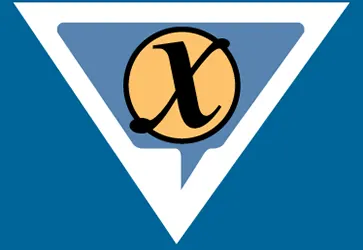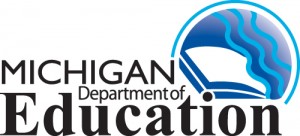EMATHS

EMATHS StoryCircles
Embracing Mathematics, Assessment & Technology in High Schools
More information about the StoryCircles process can be read in Herbst, P. and Milewski, A. (2018). What StoryCircles can do for mathematics teaching and teacher education. To appear in R. Zazkis and P. Herbst (Eds.), Mathematical Dialogue: Scripting Approaches in Mathematics Education Research and Practice Scripting Approaches in Mathematics Education p 321-364.
EMATHS StoryCircles was a Michigan’s Mathematics and Science Partnership (MSP) Program in which Macomb ISD carried out the professional development with secondary mathematics teachers across Michigan who were familiar with the EMATHS curriculum. The subcontract to the GRIP lab allowed us to support the work of the EMATHS facilitators and participants by providing participant assessment, facilitator coaching, and technological support . To engage secondary inservice teachers in a practice-based mode of professional development, the EMATHS facilitators implemented a process designed at the GRIP lab called LessonSketch StoryCircles. StoryCircles is a facilitated process of collaboratively representing a lesson using a multimedia storyboarding tool (Depict) within the LessonSketch platform. We used a blended model of professional development to support this process, including two yearly face-to-face meetings, six synchronous videoconferences, and some 40 hours of online forum interactions that used forums in the LessonSketch platform. The GRIP’s staff mentored two EMATHS facilitators in the use of the StoryCircle process, provided support to the teacher participants in the use of the storyboarding technology, administered teachers’ assessments using the LessonSketch platform, scored and analyzed those assessments, and provided hotline technology support to users. By analyzing participants’ interactions with the process and one another, researchers in the GRIP lab were able to learn about the potential of StoryCircles for developing teachers’ mathematical knowledge of teaching and improving their instructional practices as well as consider ways to improve the StoryCircles process for future cohorts.
The EMATHS StoryCircles project was premised on the notion that in order to support Michigan’s students in gaining proficiency in the Michigan Standards for Mathematics, Michigan’s teachers needed support in gaining deeper mathematical knowledge for teaching as well as making shifts to their instructional practices. The Macomb ISD in partnership with the GRIP provided practice-based professional learning experiences focused on implementation of the EMATHS activities for 16 secondary mathematics teachers serving within 6 different schools across Macomb, Huron, and Ingham counties. Teachers started their collective work in a full day face-to-face professional learning experiences to orient participants to the project and one another. After that, participants worked within one of four StoryCircles groups focused on either algebra 1 or geometry, participating in monthly video-conference meetings and private online multimedia forums within LessonSketch to collectively generate representations of EMATHS lessons, implement those lessons with their own students, share artifacts (e.g. students’ written work) from their implementation, and refine those lesson representations based on their collective experiences. Each StoryCircles group developed, implemented, and refined 4 EMATHS lesson representations to contribute to a library of EMATHS lessons representing tasks from EMATHS units. This library was developed to forward the work of these and other teachers around the state with EMATHS implementation. The project concluded with a face-to-face meeting in which teachers reviewed the created materials and selected four that best represented the kinds of instructional practices needed for implementing EMATHS tasks. Over the summer, EMATHS facilitators and participants worked collectively to refine those four lessons for public release in the EMATHS lesson library.
Click on the following accordions to view each of the different developed EMATHS lessons.
Geometry
This activity has students approach the concept of area by measuring and cutting out shapes with given conditions. Students are given the areas of each of the following shapes: rectangle, rhombus, parallelogram, right triangle, scalene triangle, and square. Students use these conditions to construct their shape labeling the base and related height to justify that their shape matches the given area. This activity could be used in a unit on area or one on modeling using geometric figures.
This activity introduces students to the three altitudes of any triangle. Students discuss the definition of altitude, use patty paper to construct altitudes of a provided acute triangle, and discuss the altitudes of right and obtuse triangles. Students learn that no matter which altitude and related base the students’ use the area of the triangle remains the same. This activity could be used during a unit on triangles and their properties.
Algebra
This activity asks students to consider a family road trip with given information (e.g. distance from location, average speed). Students have to model this situation by writing linear functions in the form of f(x) = b + mx to find the solution. Students discuss the domain and range of their function in terms of the family road trip. This activity could be used in different portions of a unit on linear functions.
This activity has students use what they know about the tables, graphs and/or rules of a quadratic function to answer questions about a quadratic situation. Students explore writing an inverse function for the given quadratic function when it is presented in vertex form. This activity could be used as an introduction of the study of inverses for quadratic functions.
Publications related to this project
| Title | Author(s) | Citation | Date |
|---|---|---|---|
| On designing better structures for feedback in practice-based professional development: Using “failure” to innovate | Brown A M, Herbst P | Brown, A. M., & Herbst, P. (2023) On designing better structures for feedback in practice-based professional development: Using “failure” to innovate. Journal of Mathematics Teacher Education Special Issue: What went wrong? Learning from less successful professional development for mathematics teachers. | 2023 |
| A heuristic approach to assess change in mathematical knowledge for teaching geometry after a practice-based professional learning intervention | Herbst P, Ko I, Milewski A | Herbst, P., Ko, I., & Milewski, A. (2020). A heuristic approach to assess change in mathematical knowledge for teaching geometry after a practice-based professional learning intervention. Research in Mathematics Education, 22(2), 188-208 | 2020 |
| Virtual Experimentation: Cartoon avatars and storyboards give teachers the chance to explore their practice | Duggan B | Duggan, B. (2019). Virtual Experimentation: Cartoon avatars and storyboards give teachers the chance to explore their practice. Michigan Education Magazine, Fall 2019, p. 24 - 25 | 2019 |
| The role of simulations for supporting professional growth: Teachers’ engagement in virtual professional experimentation | Milewski A, Herbst P, Bardelli E, Hetrick C | Milewski, A., Herbst, P., Bardelli, E., and Hetrick, C. (2018). The role of simulations for supporting professional growth: Teachers? engagement in virtual professional experimentation, Journal of Technology and Teacher Education, (26 pp. 103). | 2018 |
| What StoryCircles Can Do for Mathematics Teaching and Teacher Education | Herbst P, Milewski A | Herbst P., Milewski A. (2018) What StoryCircles Can Do for Mathematics Teaching and Teacher Education. In: Zazkis R., Herbst P. (eds) Scripting Approaches in Mathematics Education. Advances in Mathematics Education. Springer, Cham | 2018 |





